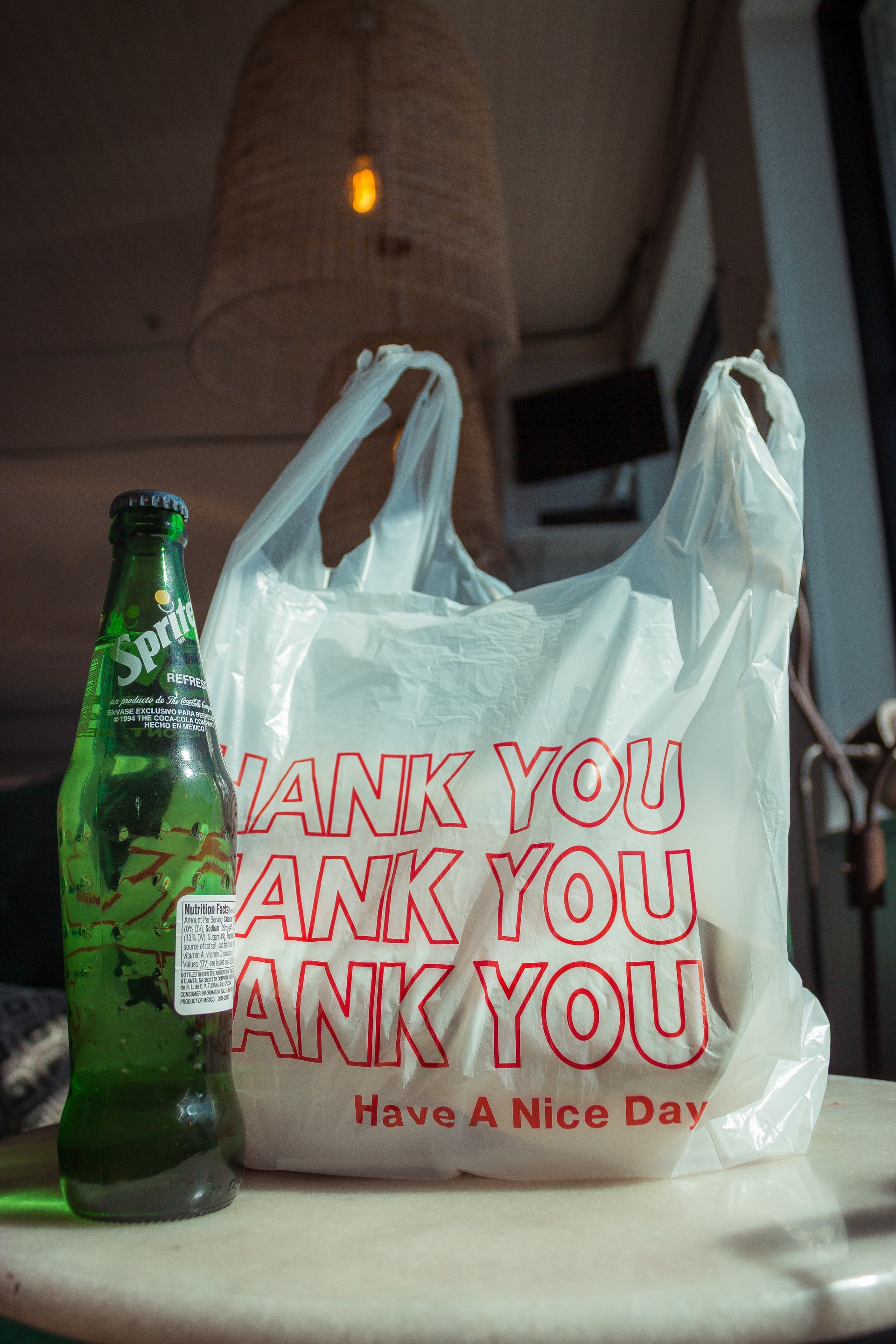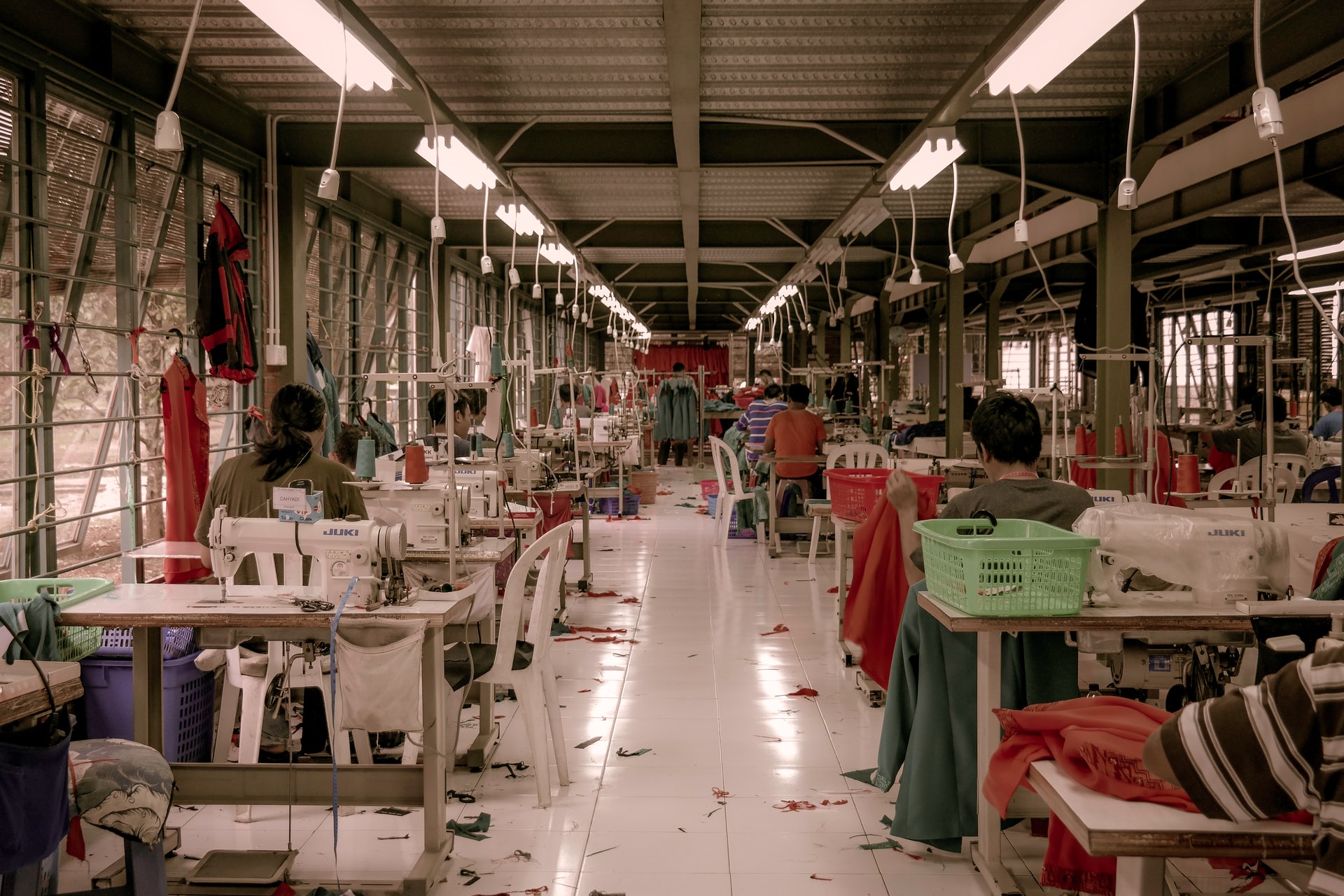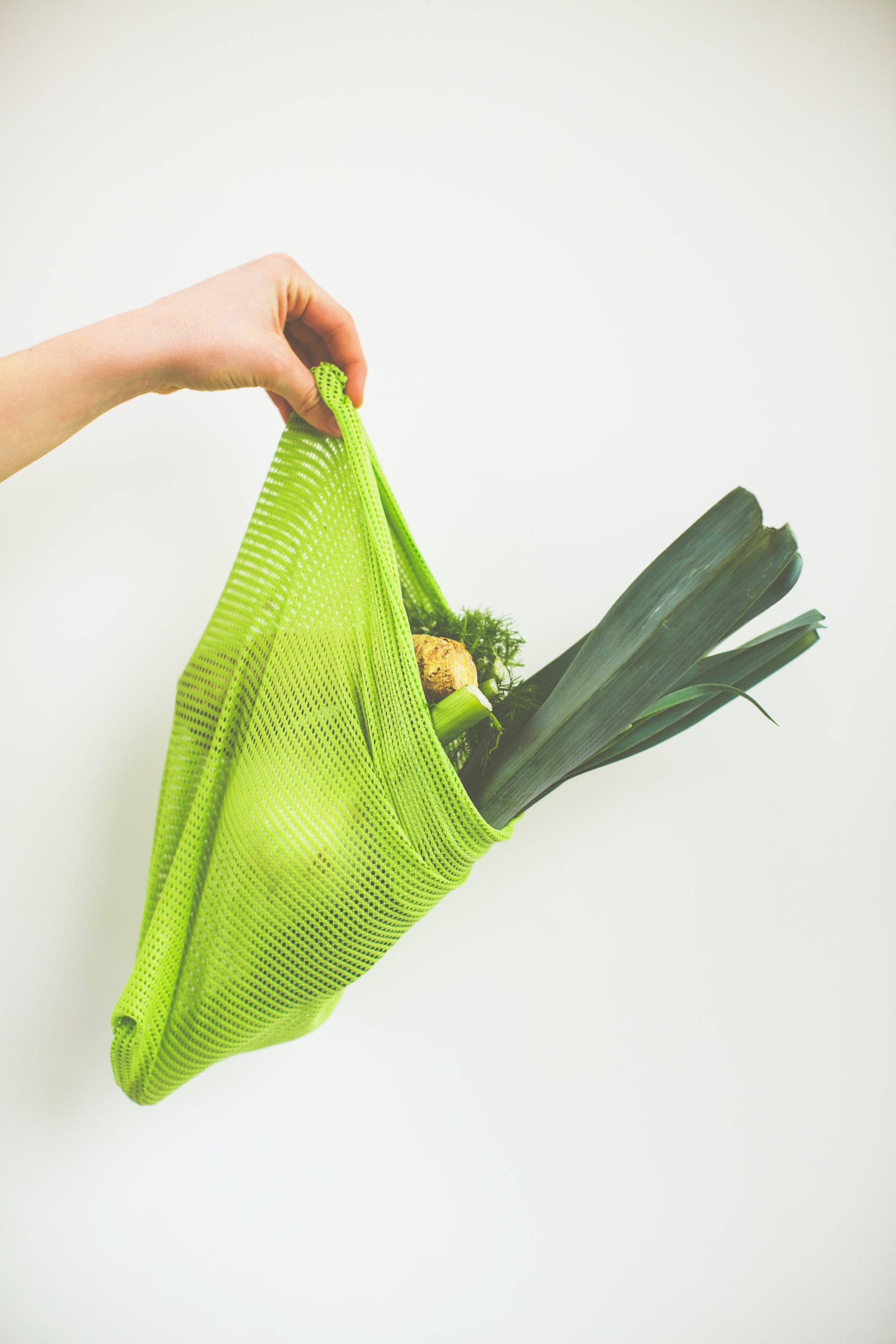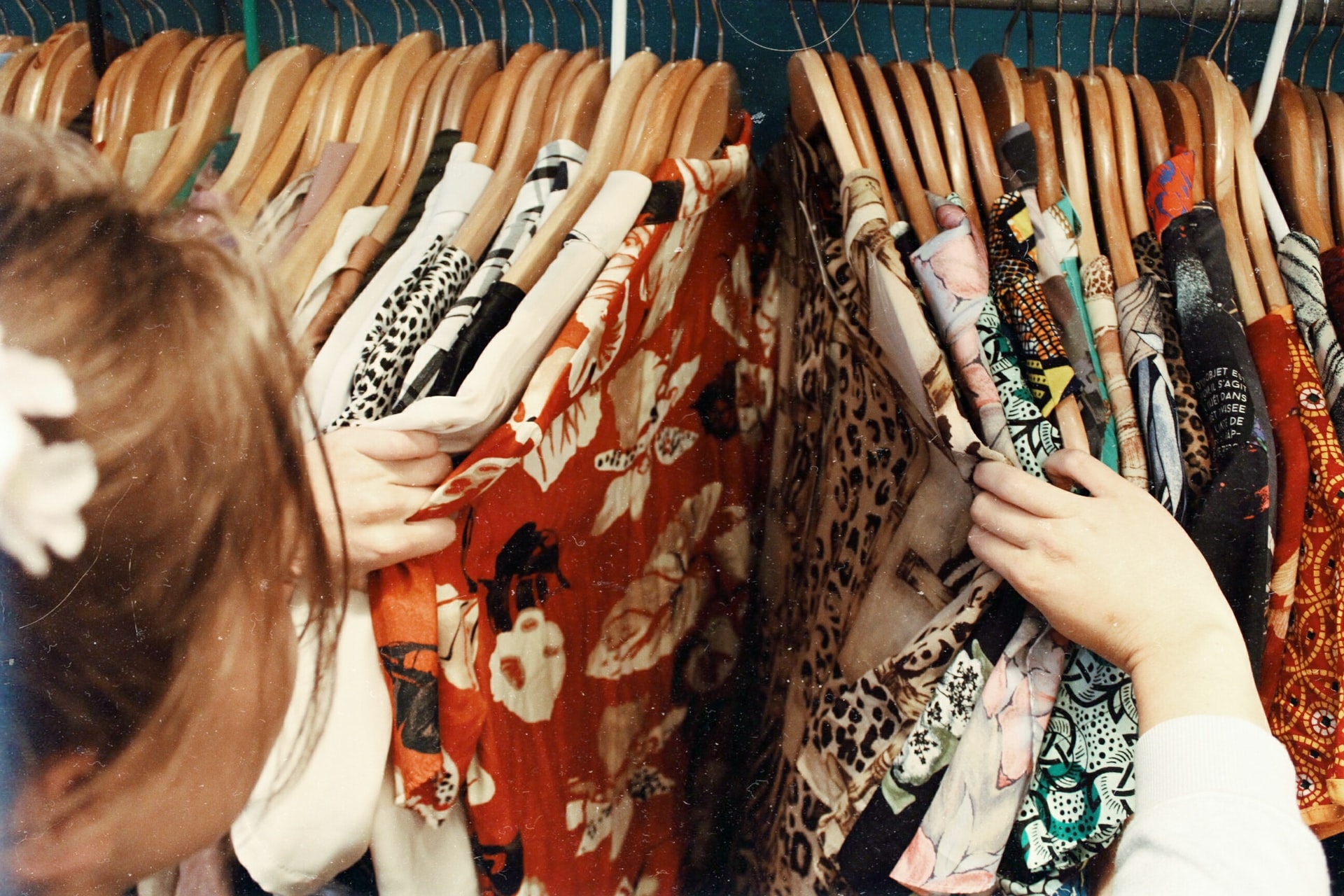What you need to know about consumer goods

We all have a vague understanding that consumer culture is linked to environmental degradation and climate change, but how do we get around this, especially when we live in the real world, with birthdays, and Christmas, social pressures to shop and often a lack of easy to access eco-friendly alternatives.
I like to do a little time traveling before purchasing anything.
Well, there are a few basics to consider, I like to do a little time traveling before purchasing anything. Instead of just thinking about price and value, think about where that good came from AND where it will end up when you are finished with it. That can put the "sale" item into a much more realistic light of its true cost.
But, what exactly are the issues associated with consumer goods?
Over-Consumption of Material Goods and Throw-Away Culture
Consumer goods are products that are found on store shelves and bought for consumption by the average consumer. Consumer goods can be anything from food, clothing, furniture, jewelry, books, and more. While purchasing goods is sometimes a necessity, many people struggle with over-consumption of material goods. This may be partially due to the fact that consumption plays a large role in western society and is often encouraged either through societal pressure or by marketing efforts and even by governments.

Instead of buying goods out of necessity, you may find yourself purchasing items in order to feel better about yourself, impress your friends, or fill a void in your life. On the other hand, companies use advertisements and sales such as “buy one, get one free” to encourage consumers to buy more and more.
Unsurprisingly, this trend of over-consumption does not increase our happiness levels. In fact, materialism and the quest for happiness through things tend to result in weakened interpersonal relationships and an increase in mental health issues such as anxiety and depression.
Not only are we encouraged to consume and accumulate a large number of material goods, but we are also encouraged to participate in a throw-away culture. Throw-away culture describes the production and consumption of inexpensive and short-lived items instead of durable goods.
Due to the low cost and availability of these items, consumers are content to dispose of their goods when they inevitably break - think fast fashion. The replacement items are just as short-lived, therefore continuing the cycle of waste production. Additionally, the throw-away culture encourages consumers to replace their items even when they don’t need replacing. This mindset is an issue due to the large amount of waste that is produced when you are in the constant pursuit of material goods that are bigger and better than the ones you owned before.
The production and consumption of single-use items are also huge contributors to waste production. Single-use items are meant to be used once and then disposed of. This creates unnecessary waste, as many single-use items can be replaced with long-lasting alternatives.
For example, a disposable coffee cup can easily be replaced by a reusable cup. Additionally, many single-use items are made from plastic such as plastic utensils, grocery bags, packaging, bottles, and straws. Plastic is associated with significant disposal and environmental issues, as many plastics cannot be recycled and reused. Instead, they are thrown out and sent to landfills.

This is an issue because plastic does not fully break down in the environment. Instead, it breaks down into tiny pieces of plastic (called microplastics) that end up being ingested by wildlife and accumulating through the food chain. Try to think of the items in your household that are not made of plastic. There is a good chance you will find that the number of items without plastic is significantly lower than the number of items that do contain plastic.
Environmental Impacts of Consumer Culture
We know that consumer culture leads to waste, but what are the environmental impacts of this waste? First of all, sending waste to the landfill does not mean that the waste will be neatly contained within the designated area.
"Leakage" occurs in many, if not all, waste disposal systems. While there are safety protocols in place, such as creating landfill “cells” that are lined with plastic and covered with a flexible plastic cap when full, this design is not foolproof. There are a variety of ways that snow and rain can enter the landfill cells, pick up contaminants from the waste, and be transferred into the ground and water supply. This liquid is referred to as leachate and is highly toxic due to the fact that many items that are sent to landfills, such as electronic devices, contain a long list of hazardous substances.
The current rate at which we are producing and disposing of consumer goods has a significant impact on our natural resources. Any given item you may purchase is linked to natural resources that are limited in supply. Minerals, water, land, trees, and energy are essential to human life but are being overconsumed due to our current consumer culture.
As the demand for cheaply made and inexpensive products grows, more and more natural resources must be used in order to satisfy consumers. While some natural resources are finite, meaning that there is a limited supply to begin with, others that we categorize as renewable are being used up so quickly that there is not enough time for them to regenerate.

This can be seen in the forestry industry when trees are cut down at a rate that is faster than they are being replanted or grown. Not only do consumer goods use up natural resources, but they also pollute them when packaging, materials used in production, and the products themselves end up in the natural environment, contributing to habitat destruction.
Social and Human Impacts
It is also important to acknowledge the ways consumer culture impacts people. The production methods for many consumer goods are unethical. Many companies outsource their production to developing countries, exploiting cheap labour and resources. Poor and unsafe working conditions, unethical shift lengths, minimal wages, and unfair treatment of workers are not uncommon in these situations. Not only are the people in these countries exploited, but they must also face the health and environmental degradation that is a foundation of cheap consumer goods.

Some consumer goods have a significant impact on human health. For example, cheap mass-produced jewelry can sometimes contain metals such as lead and cadmium. The ingestion of lead and cadmium can lead to poisoning which affects various functions of the brain, organ damage, and can cause death. This is important to keep in mind for children who are prone to putting things in their mouths.
Similarly, many water-resistant fabrics, non-stick products, flame retardants, polishes, waxes, and cleaning products contain perfluoroalkyl and polyfluoroalkyl substances (PFAS) that have negative effects on the health of those who are exposed to them. Simply producing or using these items counts as direct exposure. Even items such as furniture can have negative health effects. Wood products can contain formaldehyde, a volatile organic compound that is irritating to the eyes and respiratory system.
Consumer Culture and Climate Change
Consumer culture and climate change are two of the most significant issues of our time and are inextricably linked to each other. Greenhouse gas emissions must be reduced in order to prevent the effects of climate change. This proves to be a difficult task, seeing as consumer demand is a large reason why sectors of the economy produce the emissions that they do.
Our growing demand for new vehicles, clothing, food, entertainment and more creates incentives for businesses and industries to produce these consumer goods and release greenhouse gas emissions into the atmosphere. In order to combat global warming, we must enact policy changes in regard to how goods are produced.
This will only be done with pressure from the consumers - like you and me!

Transitioning away from fossil fuels is an important part of tackling the climate change crisis. Not only will reducing the use of fossil fuels result in less greenhouse gas emissions, but it will reduce the likelihood of spills, leaks, and other issues that harm the environment and are related to the use of fossil fuels.
Interestingly, this shift will also impact consumer culture, as the production of single-use plastics will decrease as well. Plastics can be thought of as a by-product of the energy industry. They are not cost-effective to produce on their own if fossil fuels are not being used for energy production.
What are some cool solutions to these problems associated with consumer goods?
Plastic-free Products
Plastics are durable and inexpensive which means that they are used frequently in packaging, furniture, clothing, electronics, utensils and more. This doesn’t mean that there aren’t ways to reduce the plastic in your life! You may find that the easiest plastics to replace are the ones that are single-use.
It is possible to create a lifestyle without single-use items - you simply need to re-think your habits around picking up take-out food and drinks, shopping bags, straws, water bottles, or disposable products such as cotton pads and paper plates, and even kitchen plastic wrap and baggies. There is always a plastic-free alternative - just remember, we did all of these activities before the widespread use of disposables. Think creatively, and find an alternative. Many replacements for take-out food and drink containers are made out of stainless steel or glass. Yes, the initial purchase price might be more, but it will last, often indefinitely.

Stainless steel is long-lasting and easy to clean, while glass is infinitely recyclable. These materials are often used to make reusable cups, food storage containers, straws, and more. Plastic bags can easily be replaced with cloth alternatives and fine mesh bags to use for produce at the grocery store. While food packaging at the grocery store is harder to avoid, keep an eye out for companies that use fully compostable packaging!
Local and Handmade Products
While there are obvious issues associated with consumer goods, purchasing items cannot be entirely avoided. Purchasing items that are made locally and by hand is a great way to support your community, choose products that mirror your values, and invest in good-quality items that are made with care.
Clothing, furniture, skincare, personal care products, cleaning products, home décor and more can all be bought locally or handmade. Stop by Makers' Markets, browse online, or ask family and friends for recommendations on local or handmade products and businesses. By purchasing goods from local businesses, you are directly helping an individual or family in your community. This is beneficial for your local economy as it ensures that money is circulating within your community.

Purchasing local or handmade products is also a great way to become familiar with the ingredients and processes used to create each item. This way, you will be informed on the environmental impact, quality, and ethics behind the goods you consume.
Reclaimed and Recycled Consumer Goods
Purchasing recycled, reclaimed, and second-hand consumer goods has a positive environmental impact by extending the lifespan of items that would have otherwise ended up in the landfill. This is a great alternative to buying new items which can use an abundance of natural resources, chemicals, and synthetic materials in their production.
Many new items are also cheaply made, and mass produced. Try purchasing vintage items if you are looking for good quality and long-lasting pieces, whether you are looking for clothing, furniture, or anything in between. Many vintage items are known for their high-quality materials and craftsmanship. While vintage styles are always making a comeback, you can also make alterations to your pre-loved item.

Taking a quick trip to the tailor or refinishing a piece of furniture allows you to take a retro piece and give it a modern update. This can be applied to items you already own as well as ones you buy second-hand. Check out nearby thrift stores, vintage shops, and curated online shops in order to find what you are looking for. Additionally, pre-existing items can be recycled and turned into something new! This may be as simple as repurposing an old glass jar into a chic vase.
You may also be able to purchase items that contain recycled components. Think outside the box when it comes to the consumer goods you purchase.
Steps to take
- Look at your aesthetic and decide on making the environment part of your decision-making. Everyone has their own unique tastes and preferences when it comes to consumer goods in their life. This includes what foods you like to consume, how you chose to design and decorate your living spaces, your fashion style, and everything else you spend your money on. Whether you describe your aesthetic as colourful, modern, retro, or minimalist, consider making “environmentally friendly” part of your aesthetic. This doesn’t mean you have to sacrifice your current style. There are many ways to achieve the look you want with items that do not harm the environment.
- Go back to the rules - do I need it? - Can I get it used? Before you purchase an item, it is important to ask yourself these two questions. It is easy to get carried away and buy something without fully thinking through whether you actually need it and if it will be useful and practical in your everyday life. When you don’t ask these questions, you might find yourself accumulating things that simply take up space in your life. Not only is this a waste of money, but it also contributes negatively to the environment.
- Apply an environmentally conscious filter to every new purchase. While it is important to determine whether you need an item and if it will be useful, it is also important to consider its environmental impact. What is the item made out of? How was it produced? Does it come in an abundance of unnecessary packaging? Is there a more environmentally friendly alternative? How long will it last? Where will it go when I am finished with it? Consider these factors in order to determine whether the item in question fits with your environmentally friendly aesthetic.
Here are some resources you might find helpful:
As Consumerism Spreads, Earth Suffers – National Geographic
Consumerism and its discontents
The Link Between Fossil Fuels, Single-Use Plastics, and Climate Change
Eco-Friendly Alternatives for Plastics
Stay connected with news and updates!
Join my mailing list to receive the latest news and updates. Your information will not be shared.

